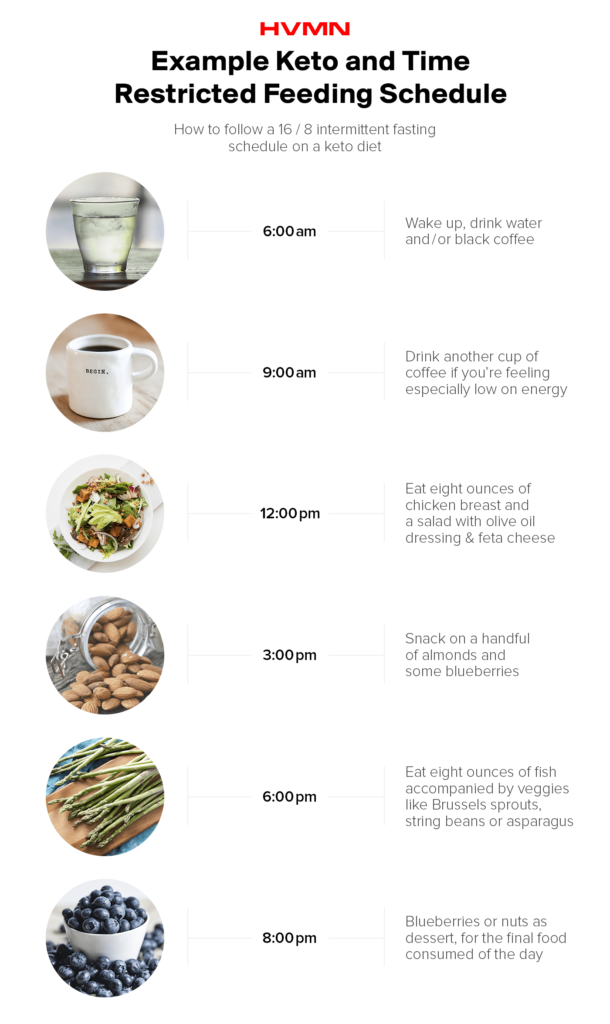Understanding your health is paramount, especially when lab results come back within the normal range but fail to tell the complete story. You may experience symptoms like fatigue or brain fog, yet your doctor reassures you that your results appear normal. It is essential to recognize that “normal” does not equate to “optimal.” Knowing the difference could be the key to regaining your vitality and safeguarding your health against chronic diseases.
This article will explore the critical distinctions between normal and optimal lab values. By examining various biomarkers, including blood pressure, vitamin D, and triglycerides, you will gain insights into how these metrics impact your overall well-being. You will be empowered to advocate for better health strategies, ensuring that you do not accept anything less than what your body truly requires.
Understanding Normal vs. Optimal Health

Definition of Normal Labs
In the context of health, “normal” lab values refer to ranges established through population studies, usually derived from a sample group that includes healthy individuals as well as those with various health conditions. However, merely falling within this “normal” range does not always signify optimal health. Understanding this distinction is crucial for making informed health decisions. Your lab results can provide insight into your state of health only if you understand what these figures truly represent.
The Reference Range Explained
The reference range is determined by assessing data from a vast array of individuals, often excluding those with severe illnesses. This means that people with chronic diseases like diabetes or hypertension, who could skew the results, are not counted in the “normal” categories. Consequently, what is labeled as “normal” can reflect a population where many individuals are not genuinely healthy. The reference ranges are thus wide enough that they may allow for hidden health issues, creating a false sense of security regarding your health status.
Implications of Being in the Normal Range
Being categorized within the normal range does not guarantee that you are free from risk factors or that your body functions optimally. For instance, a normal blood pressure reading does not account for the potential underlying conditions like hypertension that can develop over time. While you may not currently exhibit symptoms of disease, it is vital to recognize that normal levels can sometimes indicate a progression towards chronic health issues. Therefore, knowledge of what constitutes optimal lab readings can empower you to seek a better baseline for your health.
The Dangers of Blind Trust in Medical Advice
Why You Should Question Your Doctor’s Recommendations
While physicians are trained professionals, it is crucial for you to remain actively engaged in your health management. Blindly accepting a doctor’s reassurance can lead to complacency. Being informed and asking questions will help you navigate your health journey more effectively and ensure you are receiving recommendations tailored specifically to your needs rather than generalized advice.
Common Misdiagnoses and Oversights
Misdiagnoses in medical practice can occur more frequently than one might expect. Conditions may be overlooked if your symptoms do not align perfectly with established medical guidelines. Additionally, specific labs or tests may not capture the complexity of your health. Pursuing a second opinion or additional testing when something does not feel right can be critical in preventing long-term consequences.
The Importance of Seeking Second Opinions
There is great value in second opinions, especially when facing a significant health decision or diagnosis. Doctors, despite their expertise, can have differing views and approaches. By seeking another perspective, you can confirm a diagnosis, explore alternative treatment options, or even discover issues that may have been missed. Empowering yourself with knowledge is a key aspect of managing and optimizing your health.
What You Should Know About Blood Pressure
Understanding Blood Pressure Readings
Blood pressure is typically expressed as two numbers—systolic over diastolic. The systolic number (the first number) indicates the pressure in your arteries when your heart beats, while the diastolic number (the second number) represents the pressure when your heart is at rest between beats. Understanding these numbers can empower you to assess your cardiovascular health and identify potential risks that may be overlooked if you only focus on whether the values fall within “normal” ranges.
The Risks of Elevated Blood Pressure
Elevated blood pressure can be a significant risk factor for various health issues, including cardiovascular disease, stroke, and kidney damage. Knowing your blood pressure is critical, as maintaining levels within optimal ranges can mitigate these risks. Don’t settle for numbers that merely fall within “normal” parameters—aim for values that signify a healthier cardiovascular system.

Identifying Optimal Blood Pressure Levels
While anything under 120/80 mmHg is often considered optimal, ongoing research indicates that even readings in the 120-130 systolic range might prompt the onset of health issues. Monitoring blood pressure regularly and striving towards these optimal figures can help you manage your health proactively, lowering the risk of developing chronic diseases in the future.
Vitamin D: More Than Just a Vitamin
The Dual Role of Vitamin D
Vitamin D functions both as a vitamin and a hormone, playing a crucial role in bone health, immune function, and cellular growth. It is essential for the synthesis of proteins within your body, impacting various physiological processes. However, many individuals operate at inadequate levels due to lifestyle, geographic location, or dietary restrictions, which can lead to health declines.
Optimal vs. Minimum Levels of Vitamin D
While health organizations often recognize a Vitamin D level of 20 ng/mL as sufficient for preventing conditions like rickets, such a number falls short for optimal functioning in adults. Most health practitioners recommend levels closer to 50 ng/mL or higher to achieve broader health benefits, including stronger immune responses and potentially lower cancer risks.
Impact of Vitamin D Deficiency on Health
A deficiency in Vitamin D can contribute to numerous health issues, including weakened immunity, increased susceptibility to infections, and poor mental health. Inadequate Vitamin D levels can significantly hinder your body’s performance and resilience. It is essential to monitor your levels through blood tests and consider supplementation if necessary, to foster optimal health outcomes.
Triglycerides: A Hidden Danger
What Triglyceride Levels Mean
Triglycerides are a type of fat found in your blood, essential for energy but potentially harmful when levels are elevated. Measurement is taken after fasting, and a normal triglyceride level is generally considered to be under 150 mg/dL. However, it’s crucial to recognize the potential spiral effects that can arise from overlooked high triglyceride levels, particularly in relation to the development of metabolic syndromes.
Consequences of High Triglycerides
Elevated triglycerides can signal increasing risks for heart disease, stroke, and diabetes. Often, higher triglyceride levels correlate with other risk factors, such as obesity and high blood pressure. Monitoring and managing your triglyceride levels is essential as part of a broader strategy for cardiovascular health, aiming for levels ideally under 100 mg/dL for optimal health.
Striving for Optimal Triglyceride Levels
To achieve optimal triglyceride levels, dietary management plays a significant role. Reducing sugar intake and incorporating healthy fats, along with maintaining consistent physical activity, can aid in lowering these fat levels. Regular monitoring and making informed dietary choices will put you in a favorable position to maintain heart health.
Fasting Blood Sugar: The Silent Indicator
Normal Ranges vs. Optimal Ranges
A fasting blood sugar test assesses glucose levels after an overnight fast. The standard normal range is considered between 70 and 99 mg/dL; however, this range may not indicate optimal health. An optimal fasting blood sugar level tends to fall between 70 and 85 mg/dL, as sustained higher levels can signal an impending risk for type 2 diabetes and other metabolic disorders.

The Progression of Blood Sugar Issues
Elevated blood sugar levels can gradually lead to insulin resistance and diabetes, making it essential to monitor your levels closely. Remaining vigilant about any rising trends can help mitigate risks. Often, levels can remain in the normal range for years, while the underlying health issues continue to progress.
Managing Blood Sugar Effectively
Effective management of blood sugar involves dietary adjustments, stress management, and regular exercise. Prioritizing a well-balanced diet low in refined sugars and high in fiber, along with regular physical activity, can significantly influence your blood sugar levels, allowing you to stay within optimal ranges. Regular monitoring and making active lifestyle changes can lead to improved health outcomes.
The Importance of Ferritin Levels
What Ferritin Measures
Ferritin is a protein that stores and releases iron in your body, making it an essential marker for iron metabolism. Monitoring ferritin levels can provide insight into your body’s iron reserves and overall health. Low ferritin can indicate deficiencies, while high levels can signal excess iron storage, both of which can have adverse health effects.
Consequences of Low Ferritin Levels
Low ferritin often correlates with iron deficiency anemia, leading to symptoms such as fatigue, weakness, and cognitive impairments. Maintaining adequate ferritin levels is critical, as insufficient iron can hinder your body’s ability to produce hemoglobin, affecting oxygen transport throughout the body.
Risks Associated with High Ferritin Levels
Excessive ferritin levels can create oxidative stress and are linked to increased risks of cardiovascular disease, liver dysfunction, and cognitive decline. Health management should include annual testing to monitor ferritin levels, making any necessary adjustments to diet or supplementation to maintain balance.
Redefining Health Metrics
Challenging Traditional Health Guidelines
The traditional health metrics may be based on outdated information and generalized approaches. Challenge these outdated norms by actively engaging with alternative health metrics that focus more on personal well-being rather than simply aligning with standardized numbers.
The Need for Personalized Health Metrics
A cookie-cutter approach in health does not work for everyone. Personalization is vital for effective management of health. Understanding your unique physiological responses and adapting health measures to fit your lifestyle and biology fosters better outcomes, encouraging proactive approaches to health management.
Understanding Chronic Disease Risk Factors
Recognizing risk factors associated with chronic diseases empowers you to make informed decisions about prevention and management. Engaging in lifestyle changes, getting regular screenings, and understanding your unique predispositions can significantly lower your risks.
The Role of Lifestyle in Health Optimization
Dietary Adjustments and Their Impact
Your dietary choices play a substantial role in optimizing your health. Engaging with whole foods, reducing processed foods, and focusing on nutrient-dense options can lead to marked health improvements. Adopting mindful eating habits will enhance your ability to make better food choices.
Exercise and Physical Health: What’s Optimal?
Regular physical activity is essential for maintaining not only a healthy body but also a healthy mind. Strive for a balanced exercise regimen that combines cardiovascular activities, strength training, and flexibility exercises. The key is consistency—finding an activity you enjoy will encourage a lifestyle that prioritizes physical health.
Mental Health Considerations
Addressing mental health is equally crucial to overall well-being. Manage stress through practices such as mindfulness, meditation, or therapy, as mental well-being can significantly impact physical health. Building resilience and mindfulness skills will empower you to handle the challenges of daily life better.
Conclusion
Summary of Key Points
Navigating your health requires understanding the distinction between normal and optimal lab results, questioning medical advice, and seeking knowledge-driven approaches to manage your well-being. Optimal levels across key health indicators like blood pressure, Vitamin D, triglycerides, fasting blood sugar, and ferritin should be your benchmark for health.
Empowerment in Health Decisions
You have the power to take charge of your health. Challenge traditional perceptions and advocate for your health by asking questions, seeking second opinions, and making informed lifestyle choices. This proactive approach prepares you to navigate health complexities effectively.
The Importance of Active Health Management
Ultimately, active health management—through regular monitoring, personalized adjustments, and informed decision-making—will pave the way for you to achieve and maintain optimal health. Prioritize your health as a lifelong journey and employ comprehensive strategies that empower you to make choices that benefit your well-being.







